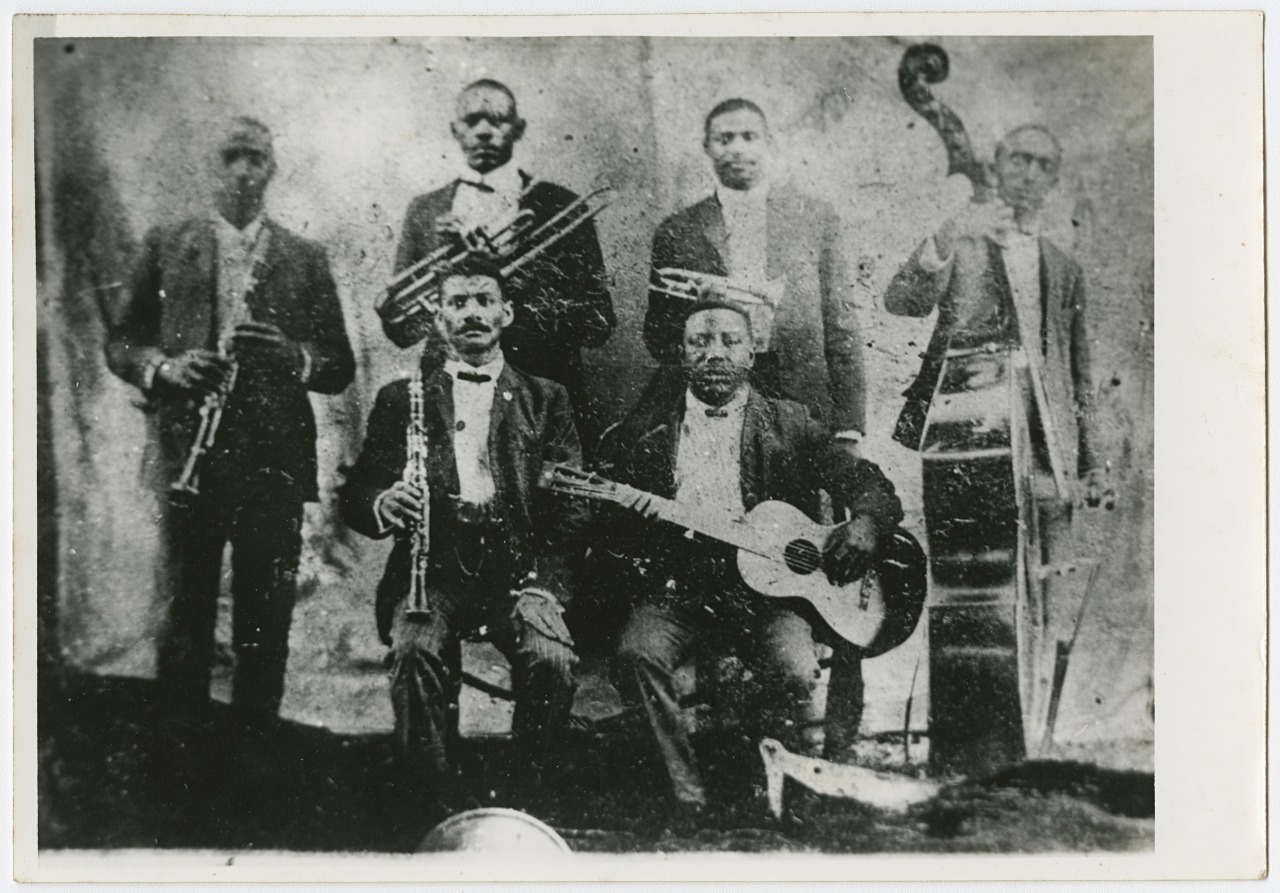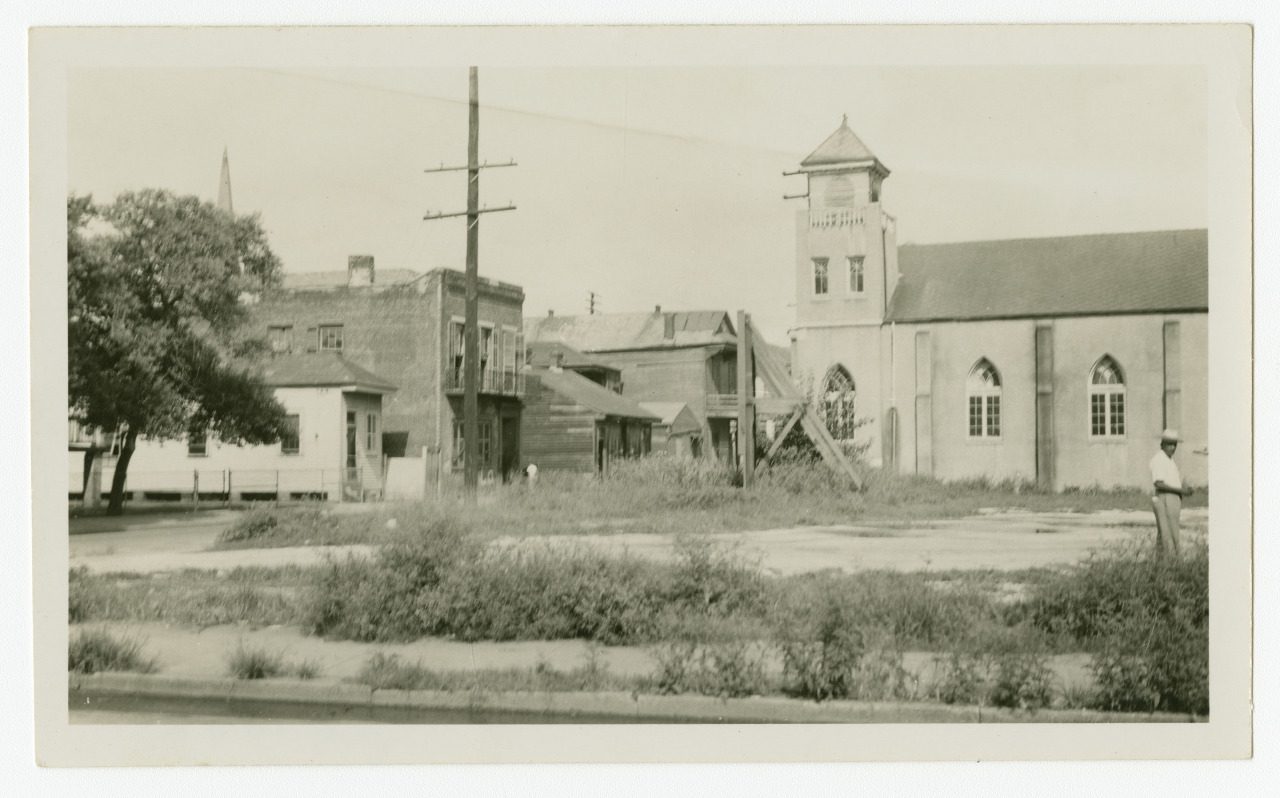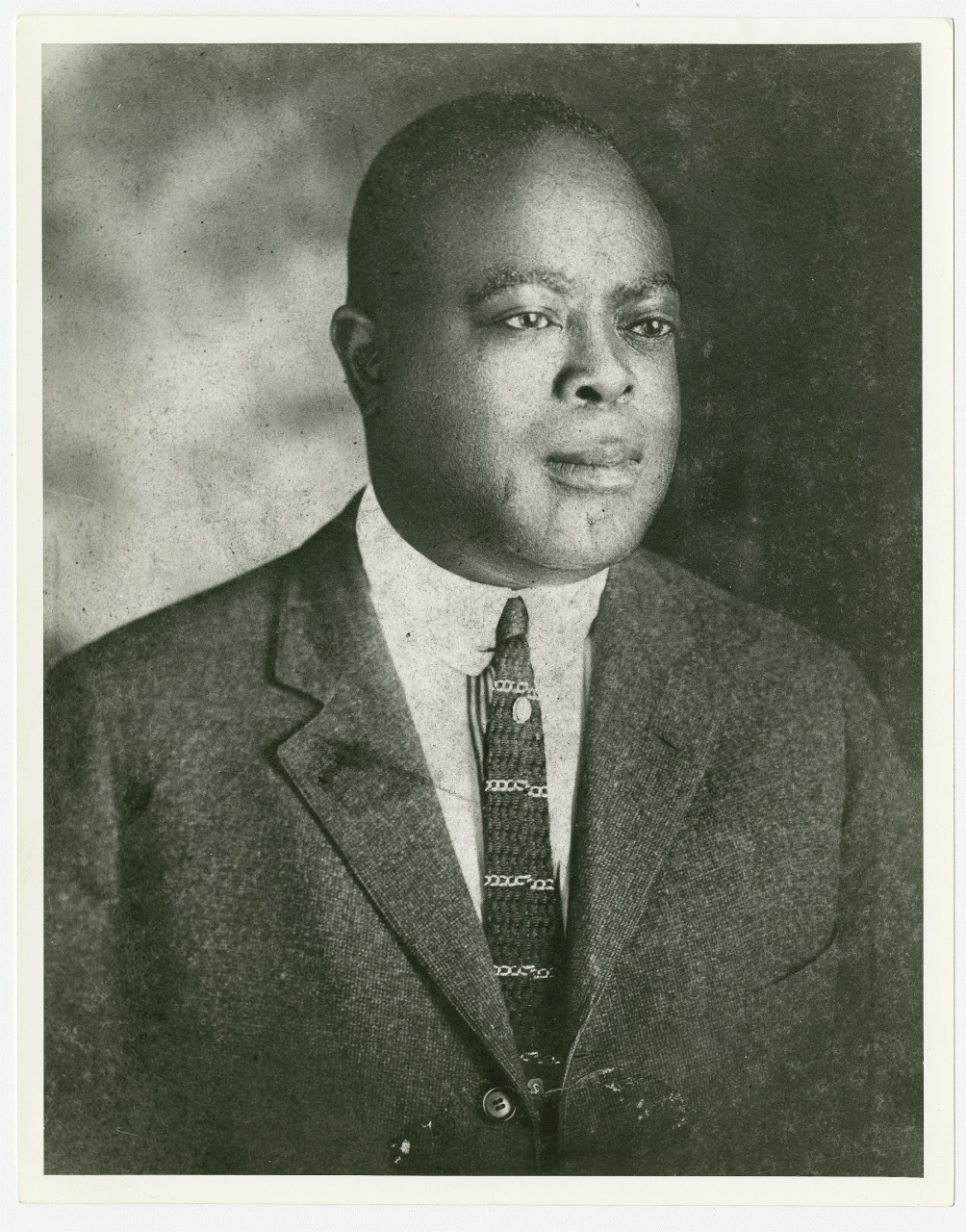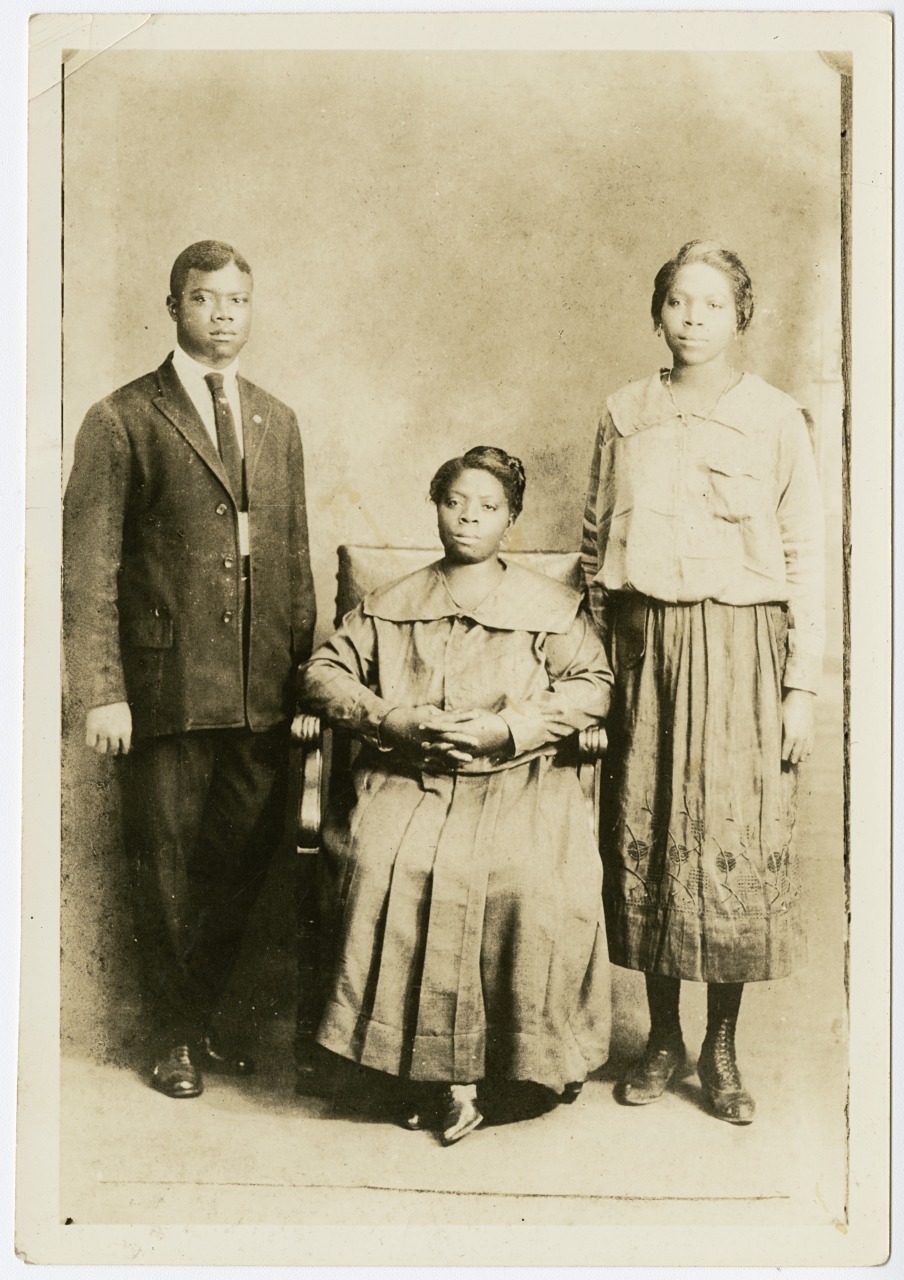
Buddy Bolden’s band
standing, from left: Frank Lewis, Willie Cornish, Charles “Buddy” Bolden, Jimmy Johnson
seated, from left: Willie Warner, Brock Mumford
ca. 1898; gelatin silver print
The Historic New Orleans Collection, The William Russell Jazz Collection, acquisition made possible by the Clarisse Claiborne Grima Fund, MSS 520, 92-48-L.314Charles “Buddy” Bolden (1877–1931) led one of the most popular dance bands at the turn of the century. His unique playing style, characterized by his loud, brash tone and his regular use of syncopation and blue notes, distinguished him from many of his contemporaries and made him the king of cornet players. Bolden’s band often played at saloons in Uptown Storyville, including Funky Butt Hall. The hall was officially named Union Sons Hall and was also known as Kenna’s, or Kinney’s, Hall, but it was popularly referred to as the Funky Butt, after lyrics from one of Bolden’s most popular songs, “Buddy Bolden’s Blues.” The hall served as a Baptist church on Sundays and later was solely used for this purpose. Bolden’s career was cut short by the decline of his mental health, which led to his commitment to the state mental asylum in 1907.

View of Perdido Street from Loyola Avenue, showing Funky Butt Hall on right
July 1949; gelatin silver print
The Historic New Orleans Collection, The William Russell Jazz Collection, acquisition made possible by the Clarisse Claiborne Grima Fund, MSS 520, 92-48-L.271

Freddie Keppard
ca. 1910; gelatin silver print
The Historic New Orleans Collection, The William Russell Jazz Collection, acquisition made possible by the Clarisse Claiborne Grima Fund, MSS 520, 92-48-L.281A number of cornet players followed in Bolden’s footsteps, vying for recognition as the best, most innovative, and most popular. Freddie Keppard (1890–1933) and Joe “King” Oliver (1885–1938) were known as two of the premier cornet players and band leaders in the District. Keppard led his band at the Tuxedo Dance Hall and Pete Lala’s, while Oliver played engagements at the Big 25, the 102 Ranch, Abadie’s Cabaret, and Pete Lala’s.

Joe “King” Oliver
ca. 1923; gelatin silver print
The Historic New Orleans Collection, The William Russell Jazz Collection, acquisition made possible by the Clarisse Claiborne Grima Fund, MSS 520, 92-48-L.108Around 1914–15, Oliver took notice of a young cornet player living in Uptown Storyville by the name of Louis Armstrong. During the waning days of Storyville, Oliver nurtured the young musician with familial affection, bringing him home for meals and teaching him the nuances of musical performance and adulthood.

Louis Armstrong with his mother, May Ann, and sister, Beatrice
ca. 1920; gelatin silver print
The William Russell Jazz Collection, acquisition made possible by the Clarisse Claiborne Grima Fund, The Historic New Orleans Collection, MSS 520, 92-48-L.280Louis Armstrong (1901–1971) moved into Uptown Storyville at the age of six with his mother, May Ann, and sister, Beatrice. Through his mother, he was exposed to the world of prostitution and the music of the spiritualist churches, both of which would later shape his entry into the music business. Growing up only a few blocks from Funky Butt Hall, as well as many other clubs in and around the Uptown district and Storyville proper, Armstrong was surrounded by music. As an adolescent, he began playing blues on his cornet to prostitutes and hustlers in the gritty honky-tonks of his neighborhood. With practice and lessons from King Oliver, Armstrong’s musical skills improved, and he was soon leading his own band in Storyville, mimicking the repertoire and style of the Ory and Oliver Band.

Johnny Dodds’s clarinet
ca. 1880; wood, metal, cork
by Buffet Crampon
gift of Dr. S. Frederick Starr, The Historic New Orleans Collection, 2012.0260The career of Johnny Dodds (1892–1940) took off in Storyville, where he played with the Eagle Band and as a member of the front line of the band led by Edward “Kid” Ory and Joe “King” Oliver. Dodds eventually left New Orleans for Chicago, where he was an integral member of King Oliver’s Creole Jazz Band and later Louis Armstrong’s Hot Five.
